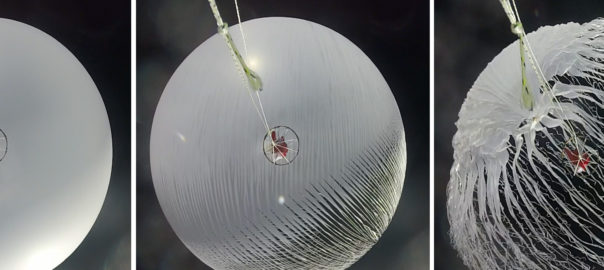This was the 56th balloon flight for the NASA Nebraska High Altitude Ballooning program. We arrived at the South Omaha Campus of Metropolitan Community College at 8 am on a lovely spring Saturday morning. A few days prior, the forecast was saying that there was a 30% chance of thunderstorms in Omaha in the morning and a 50% chance of thunderstorms in Iowa where we were planning to recover the payloads. So, we were pleased to have the nice temperatures and no rain.
Michael Sibbernsen went over the pre-launch procedures.


We took a few photos with the LG 360 camera on the ground, but did not fly it because we were at our weight limit for all of the experiments. Click and drag to look around.
[vrview img=”http://nearspacescience.com/wp-content/uploads/2017/04/20170415_081809.jpg” ]
Prepping the experiments.
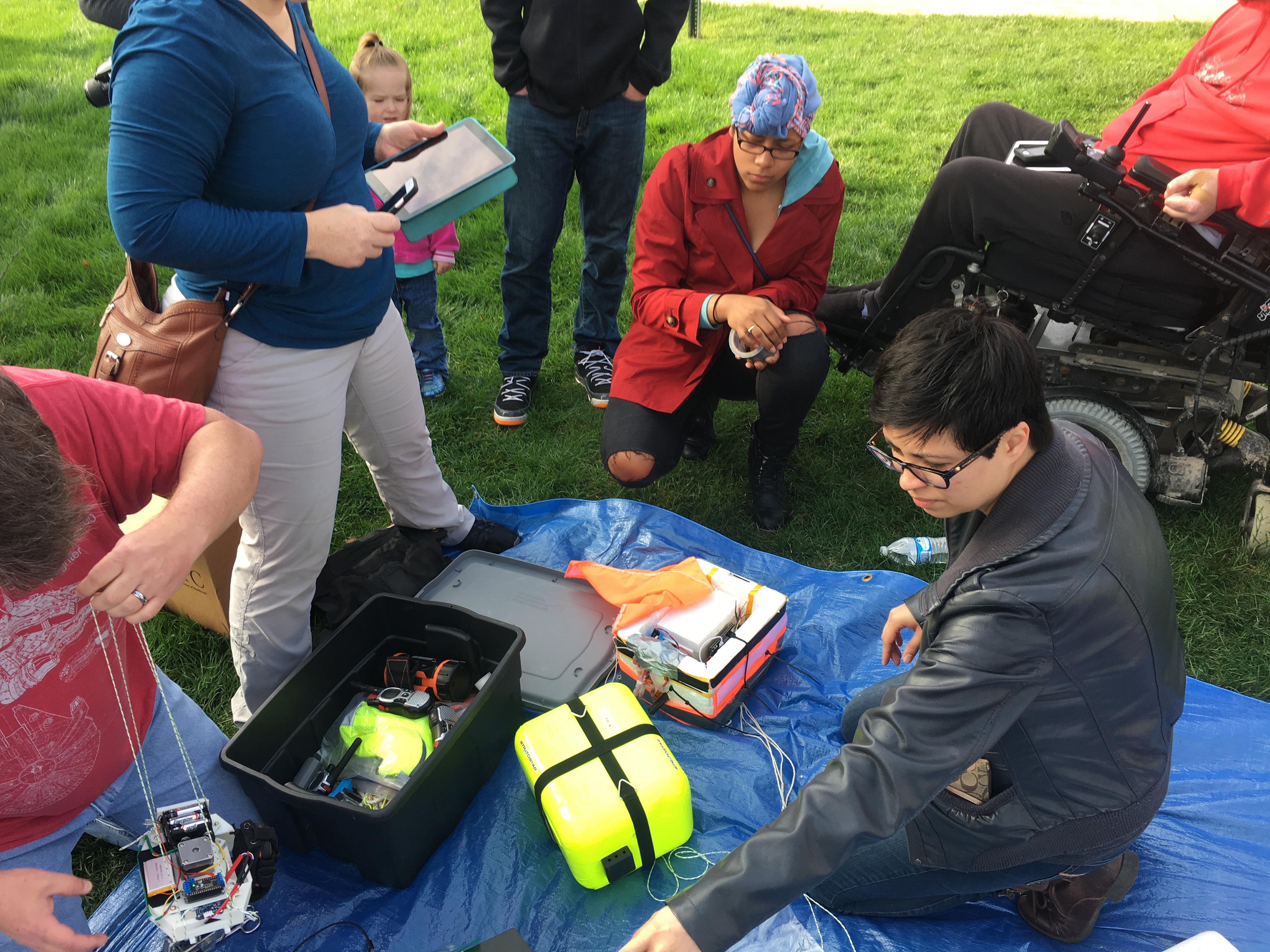

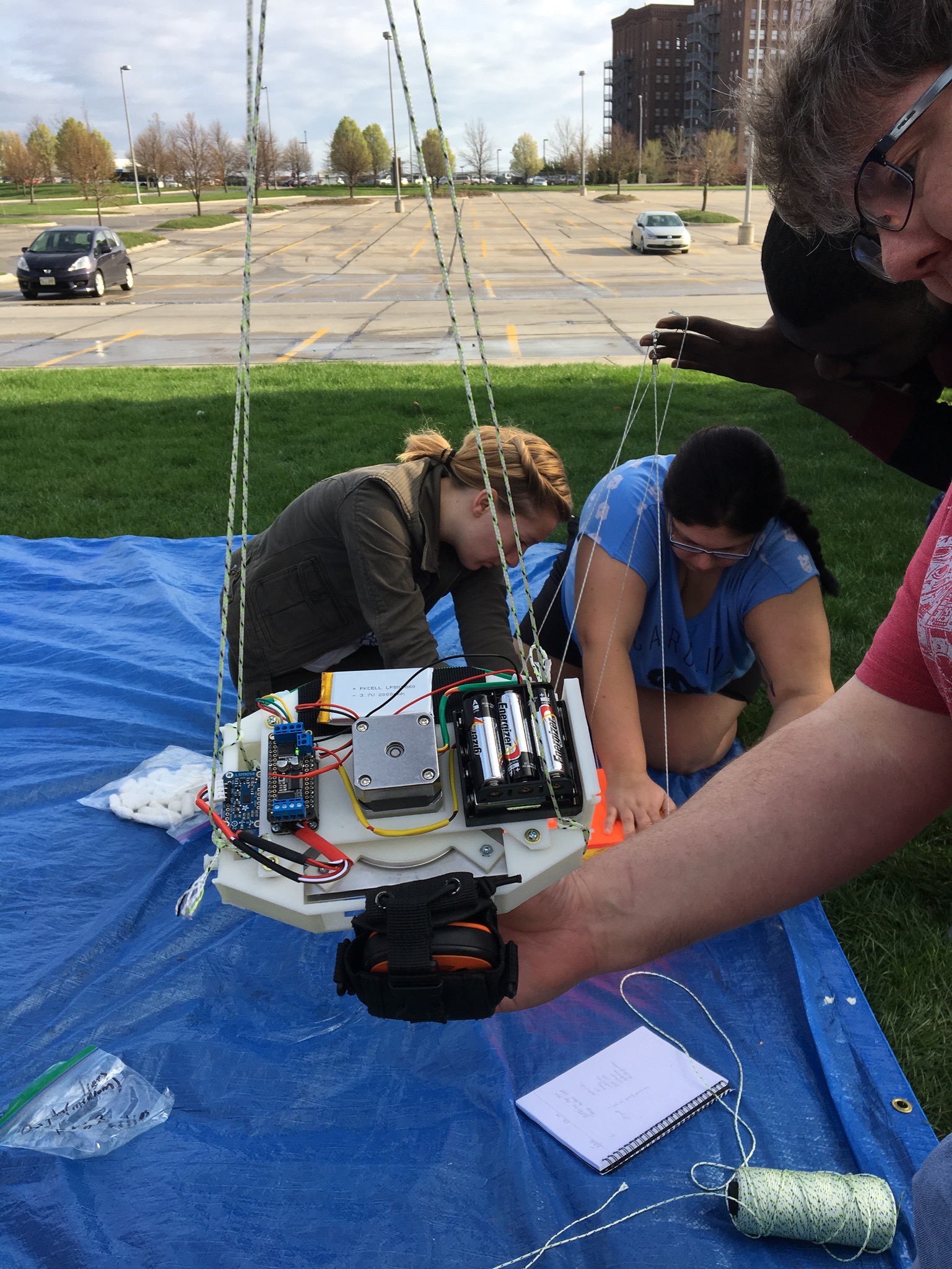
Filling the balloon.

Lift off! 

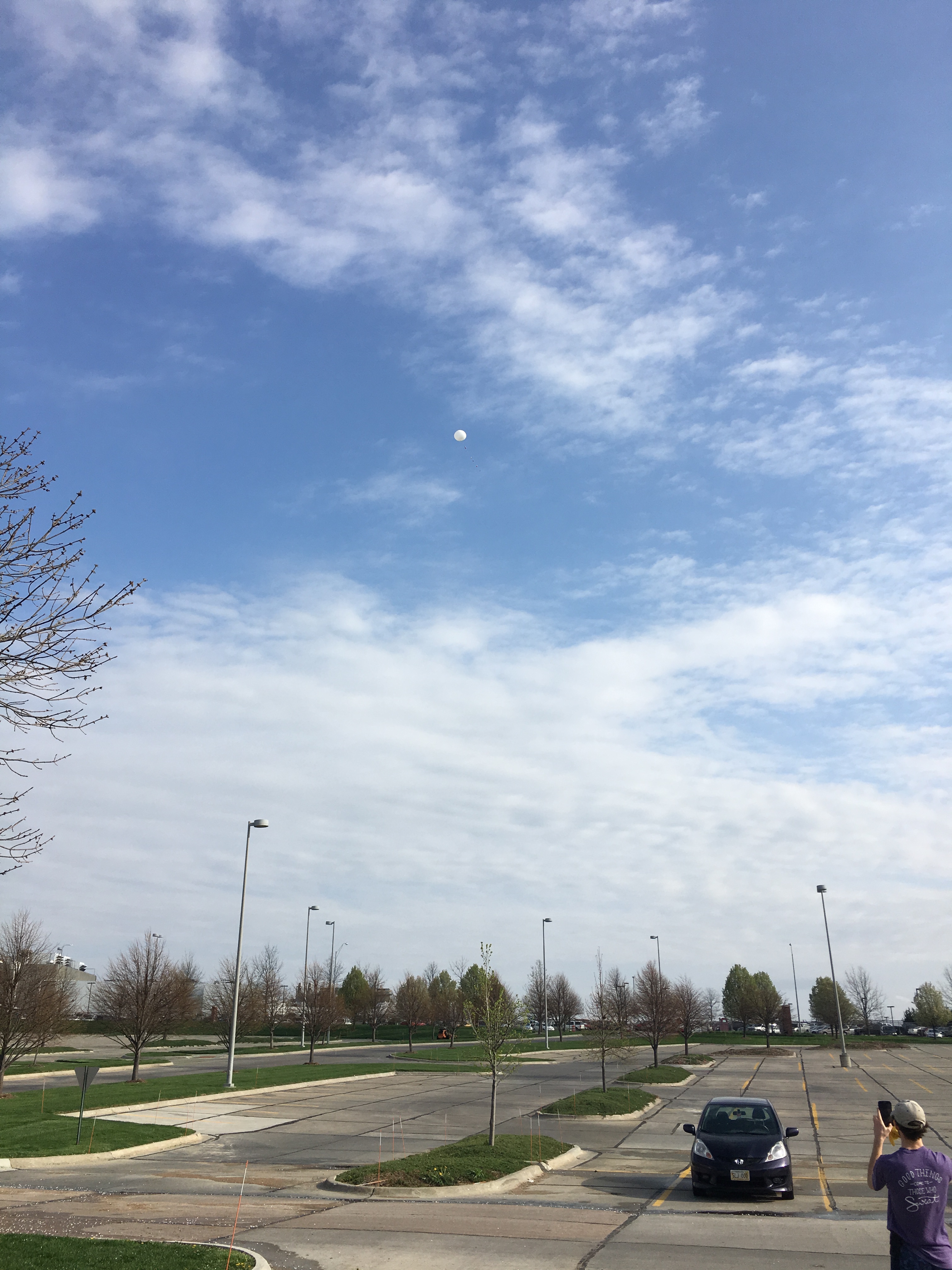
The chase is on!
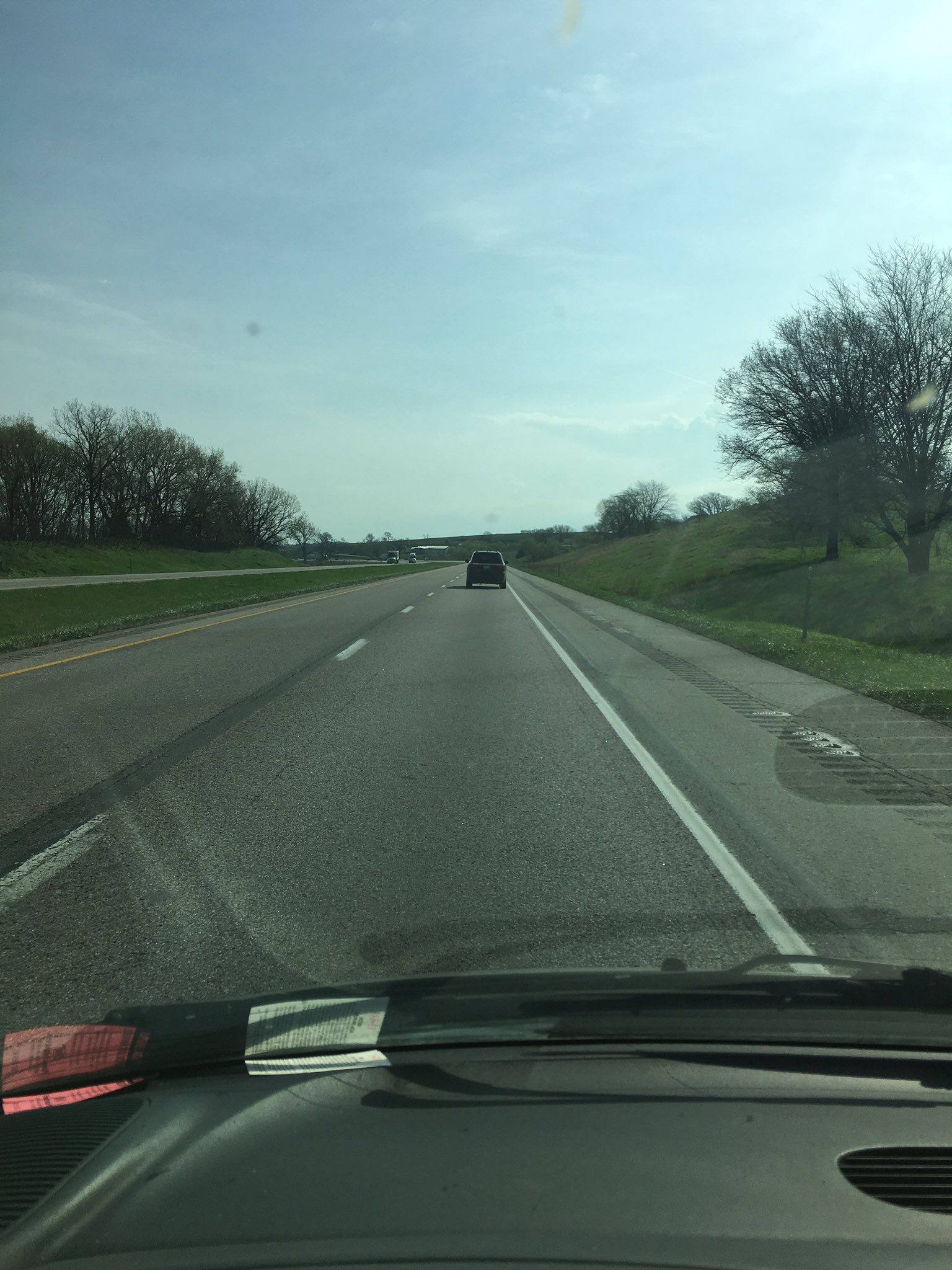
We used a new Kaymont 1200 g weather balloon and overfilled it a bit. So, the burst was a little short and it landed a little closer than our prediction specified.
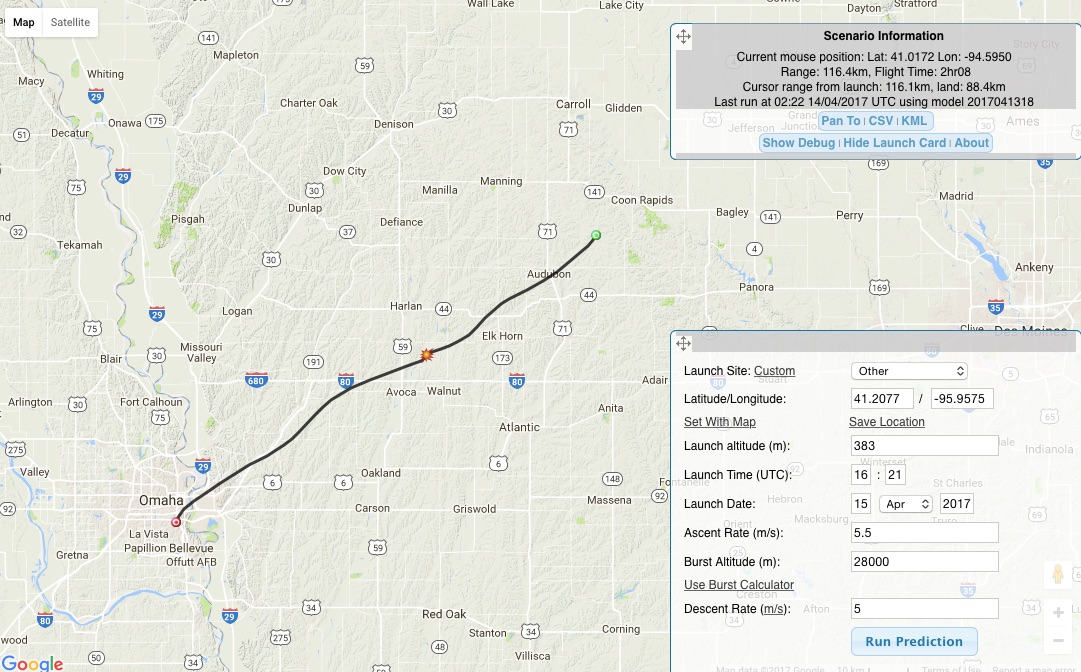
Here was the actual path of the balloon. The last point is where we drove to met up near I-80 before turning off the tracking.

We stopped receiving the APRS signal, our secondary backup tracking, after the burst. We were starting to sweat when we did not get a signal from the SatCom once it was on the ground for a while. We were also having trouble getting cell phone signal in rural Iowa and our walkie talkies were not working properly either. This made getting the information from the payloads and communications between our student teams more complicated. Our SPOT GPS, the tertiary tracking which was on the bottom of the string, on the camera platform, was in a field near Minden, Iowa, separate from the rest of the payloads.
We finally got the location from the SatCom and one team was closer than the rest of the cars because of closed exits on the interstate. The payloads landed in a plowed field. The landowner helped the recovery team by taking them out into the field on a utility vehicle.
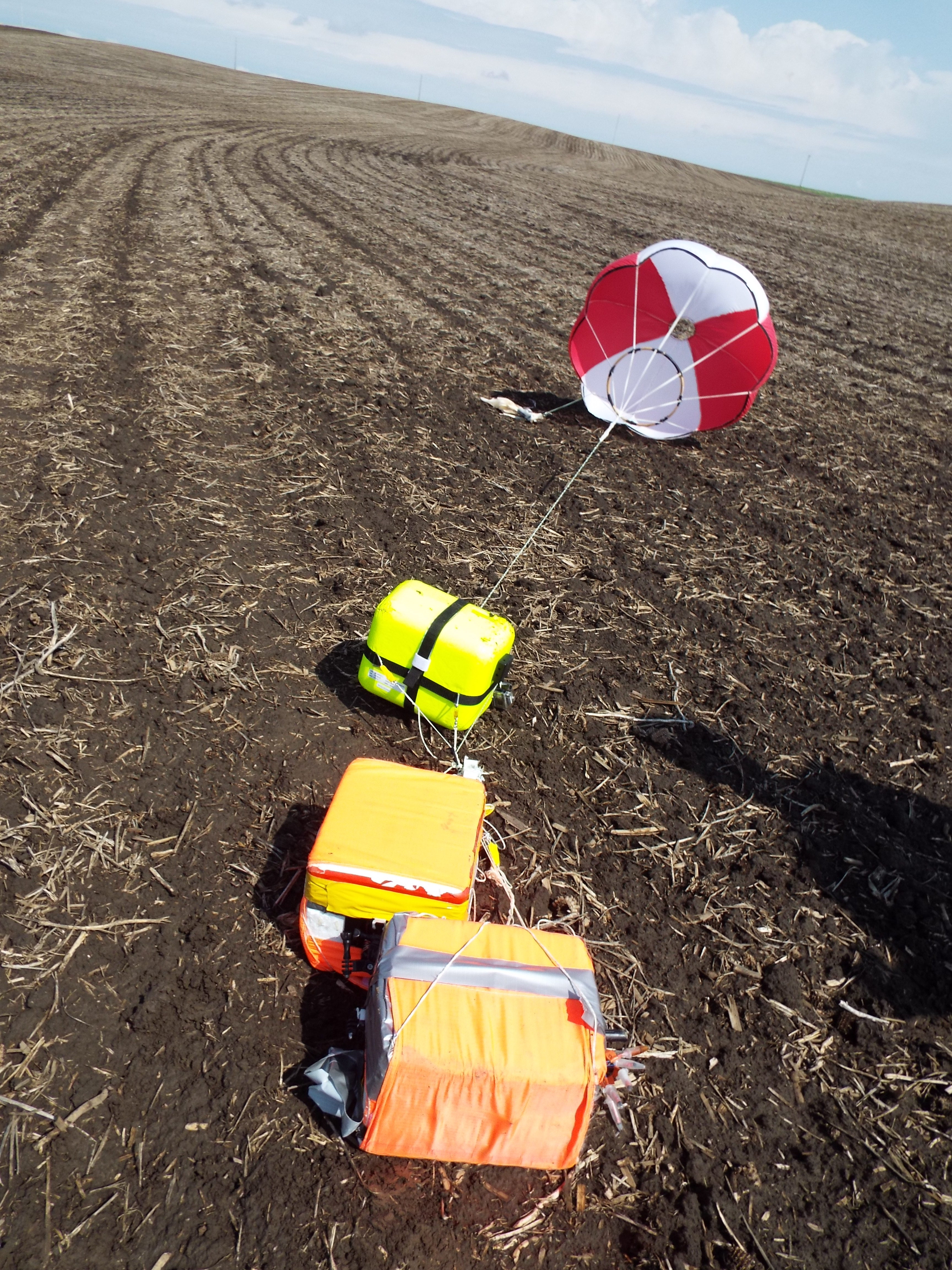
All of the teams regrouped at a nearby parking lot.
It turns out that the APRS antenna got tangled in line and ripped off. That’s why we no longer received those signals.
The camera itself on the bottom of the string had a safety line, so that was still attached, but the camera stabilization platform did not fare so well. This is the moment when Mike realized that he will need to completely rebuild his project before the total solar eclipse in August.
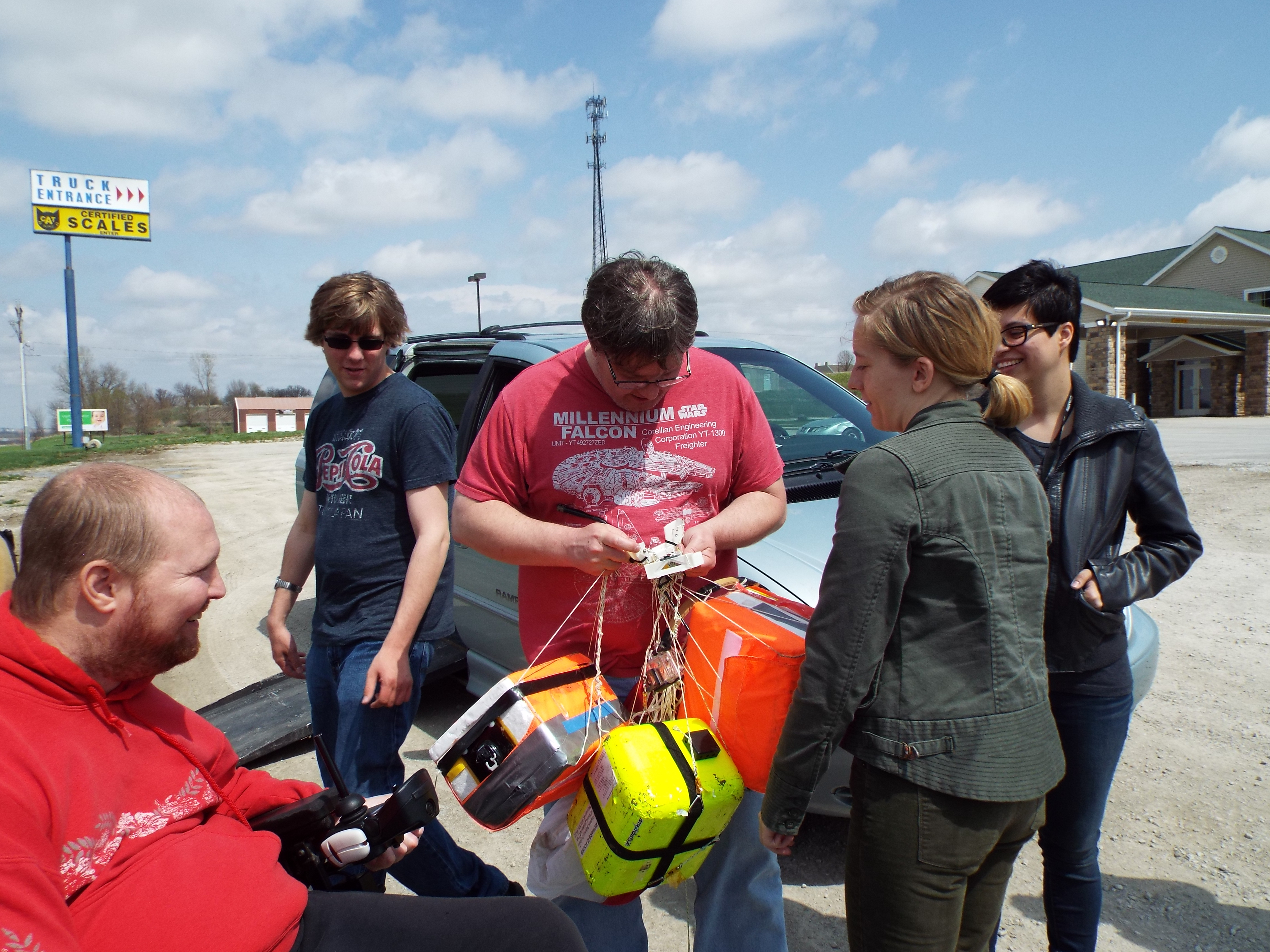
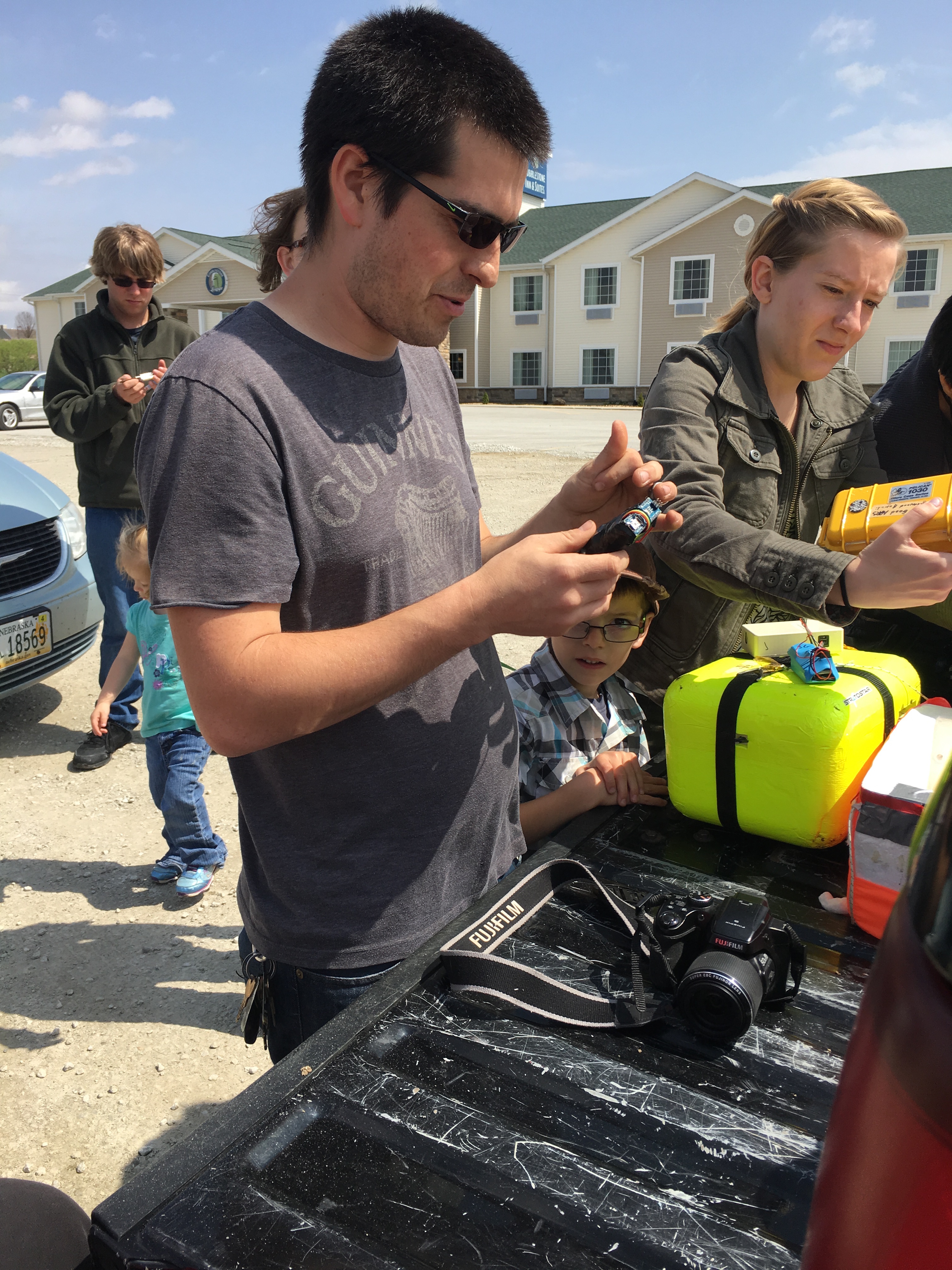
The MCC recovery crew after a successful balloon mission.
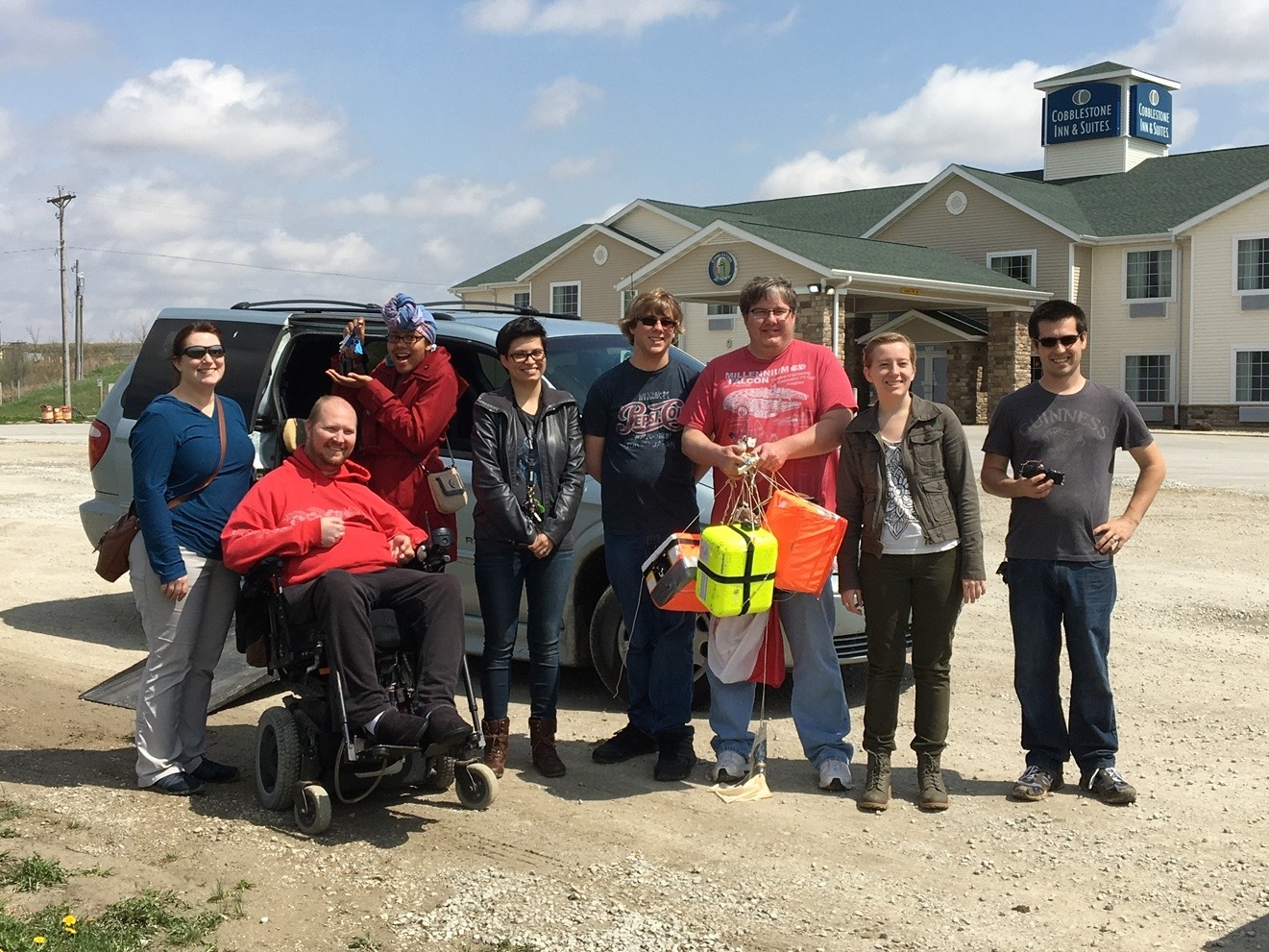
Since we found the payloads, we earned our lunch.

Michael was looking at the footage from the Go Pro camera and there was a cheer from the group when we first viewed the spectacular balloon burst.

We stopped on our way home to find the SPOT GPS tracker in another field as the clouds gathered. It was face down in the dirt and still got a signal out to the satellite and was working perfectly. Good SPOT.
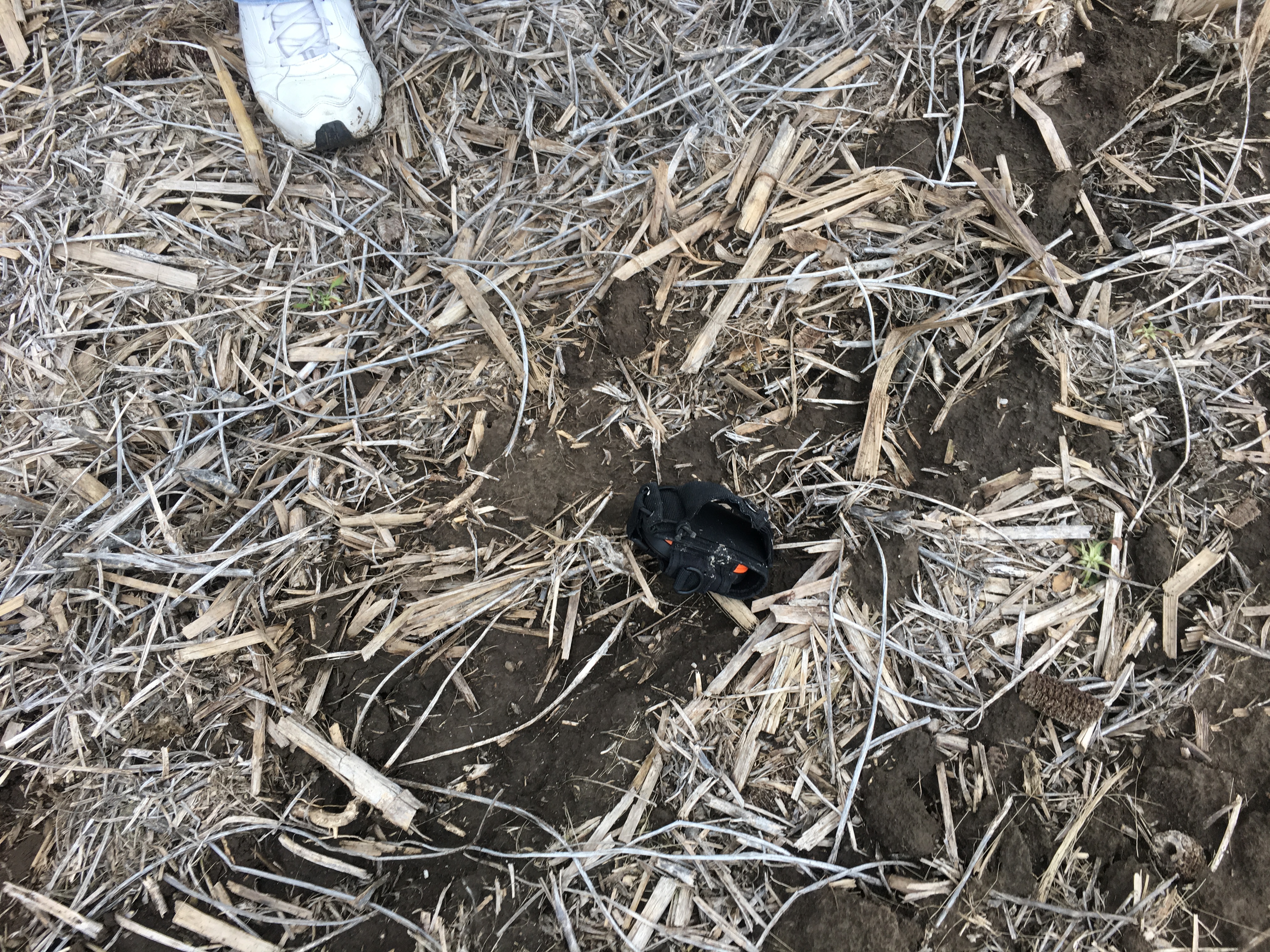
Drops of rain were beginning to fall as got back in the vehicles to head for home.

Photos and video from the Go Pro camera:
Liftoff video
South Omaha Campus of MCC 
Livestock Exchange Building

Striped clouds



Mike’s poor camera platform in the process of being shredded by the balloon’s strong turbulence and whipping payload lines.


Photo credits by the MCC Physics Team: Michael and Kendra Sibbernsen, Mark Stearman, and Andy Barritt
